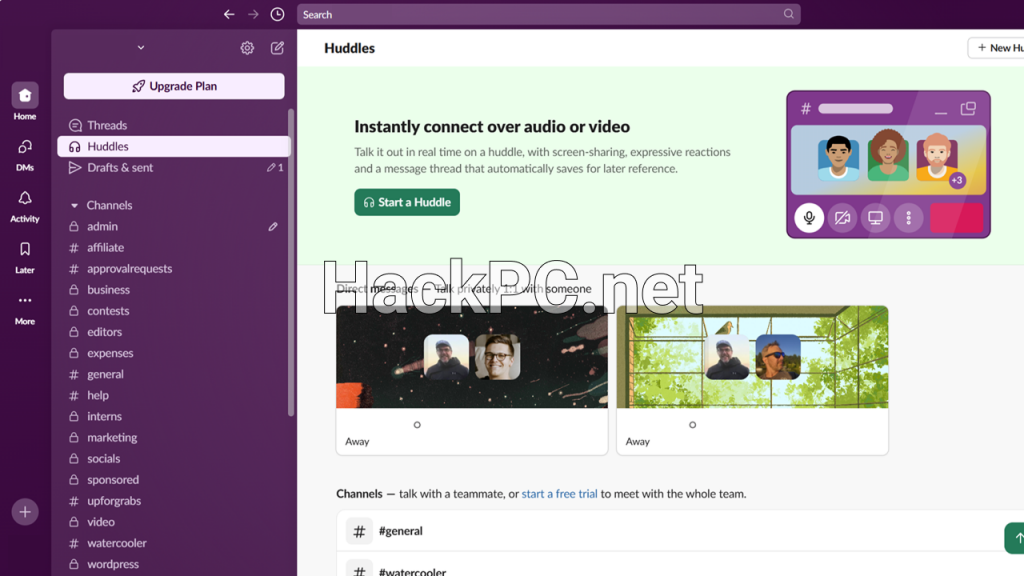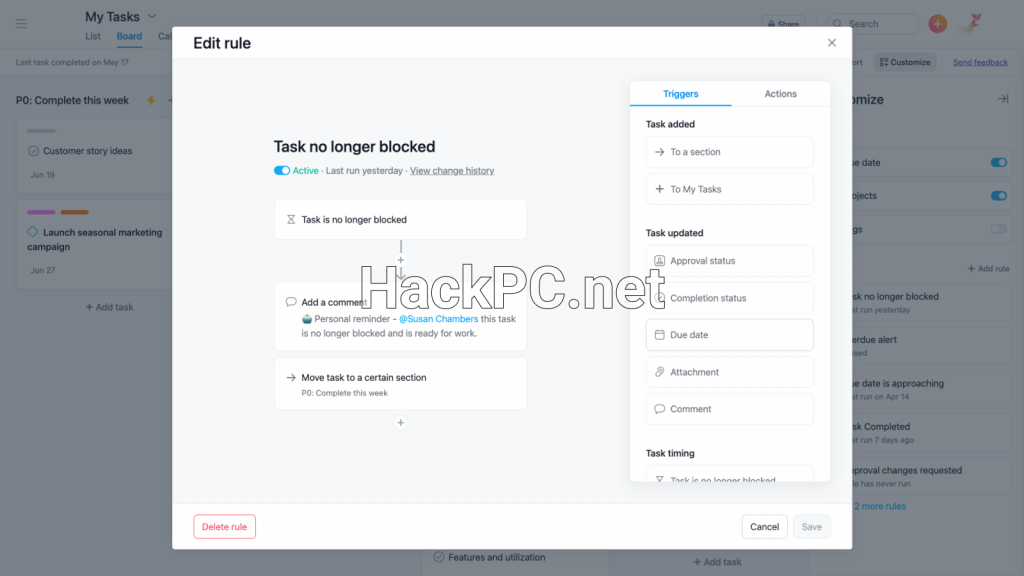
When remote work transformed from occasional perk to business necessity, team collaboration tools evolved from nice-to-have to mission-critical infrastructure. Having implemented both Slack and Asana across multiple organizations over the past five years, I’ve witnessed firsthand how these platforms shape team dynamics, productivity metrics, and organizational culture.
The Digital Workspace Revolution
The team collaboration software market isn’t just growing – it’s exploding. With hybrid work models becoming permanent fixtures in corporate strategy, choosing between communication platforms like Slack and project management software like Asana represents more than a technology decision – it’s a fundamental choice about how your organization operates.
Here’s the fascinating paradox: while Slack excels as a team messaging app fostering real-time collaboration, Asana dominates the work management platform landscape with its structured approach to task management and deadline tracking. But in 2025, these boundaries have blurred significantly.
Understanding the Core DNA
Slack: The Communication Powerhouse
Slack fundamentally reimagined business communication when it launched, transforming chaotic email threads into organized team channels. The platform’s genius lies in its ability to balance synchronous and asynchronous communication while maintaining context through threaded conversations.
What makes Slack distinctive in 2025:
- AI-Powered Intelligence: The new Business+ plan at $15/user/month includes advanced AI capabilities for workflow automation, conversation summaries, and intelligent search
- Salesforce Integration Depth: Following the Salesforce acquisition, Slack now offers unprecedented CRM integration capabilities
- Agent Deployment: The ability to deploy Agentforce agents directly within Slack transforms it from communication tool to operational hub
- Enterprise Search Evolution: The new Enterprise+ tier introduces comprehensive enterprise search across all connected systems
The platform’s notification management system has matured considerably, offering granular controls that prevent the overwhelming ping fatigue that plagued early adopters. Mobile apps maintain feature parity with desktop versions, ensuring seamless productivity across devices.

Asana: The Project Management Architect
Asana approaches team productivity from an entirely different angle – structure first, communication second. This work management platform treats projects as living entities with clear hierarchies, dependencies, and measurable progress indicators.
Asana’s 2025 evolution showcases:
- AI Studio Integration: Available across Starter ($10.99/user/month) and Advanced ($24.99/user/month) plans, enabling intelligent task automation and project insights
- Portfolio Management: Advanced visibility across multiple projects with resource management capabilities
- Time Tracking Native: Built-in time tracking eliminates third-party app dependencies for project tracking
- Workflow Builder: Visual automation tools that rival dedicated workflow automation platforms
The platform’s kanban boards and Gantt charts provide visual project representation that appeals to different management styles and agile methodology practitioners.
Feature-by-Feature Combat Zone
Communication Capabilities
Slack dominates the team chat landscape with its intuitive channel structure, huddle functionality for impromptu video conferencing, and Canvas feature for collaborative documentation. The platform processes millions of messages daily while maintaining sub-second response times.
Asana counters with integrated commenting on tasks, project-level discussions, and status updates that maintain context within the project framework. While not as fluid as Slack’s real-time messaging, Asana’s communication features ensure discussions remain tied to deliverables.
Project Management Prowess
Asana excels with its comprehensive project templates, custom fields, and dependencies that map complex workflows. The platform’s Timeline view provides visual project tracking that surpasses basic task lists, while Portfolios offer executive-level oversight across initiatives.
Slack responds with its Workflow Builder and Lists feature, attempting to bridge the gap between communication and task management. However, these features feel supplementary rather than core to the platform’s identity.
Integration Ecosystem
Both platforms boast extensive integration capabilities, but their approaches differ fundamentally:
Slack’s marketplace features over 2,600 apps, with deep integrations for Google Drive, Microsoft Teams interoperability, and developer-friendly API integration. The platform acts as a central nervous system for your tech stack.
Asana’s integrations focus on productivity tools and enterprise solutions, with particularly strong connections to Adobe Creative Cloud, Salesforce, and time tracking applications. The emphasis remains on enhancing project workflow rather than becoming an all-encompassing hub.
Pricing Architecture Analysis
Slack’s Tiered Approach (2025 Rates)
- Free Plan: 90-day message history, 10 app integrations, basic features
- Pro Plan: $7.25/user/month (annual), unlimited message history, guest access
- Business+ Plan: $15/user/month (annual), advanced AI features, premium Salesforce integrations
- Enterprise+ Plan: Custom pricing, enterprise search, enhanced security controls
The recent price adjustments reflect Slack’s evolution from messaging app to comprehensive digital workspace, with AI capabilities justifying premium tiers.
Asana’s Scalable Structure (2025 Rates)
- Personal Plan: Free for up to 10 users, unlimited tasks and projects
- Starter Plan: $10.99/user/month (annual), Timeline view, custom fields, workflow automation
- Advanced Plan: $24.99/user/month (annual), Portfolios, workload management, time tracking
- Enterprise/Enterprise+ Plans: Custom pricing, advanced security, HIPAA compliance options
Asana’s pricing reflects its positioning as a comprehensive project management solution, with each tier unlocking increasingly sophisticated planning and tracking capabilities.
Real-World Implementation Scenarios
Marketing Team Dynamics
A 50-person marketing team implementing both platforms discovered interesting synergies. Slack channels organized around campaigns facilitated rapid creative iteration and approval processes. Meanwhile, Asana’s campaign templates and deadline management ensured deliverables stayed on track. The team reported 40% faster campaign execution when using both platforms in tandem.
Software Development Workflows
Engineering teams traditionally gravitate toward Slack for its GitHub integration and code snippet sharing capabilities. However, Asana’s sprint planning features and API integration capabilities make it invaluable for agile teams practicing scrum methodologies. The combination enables seamless transition from planning (Asana) to execution communication (Slack).
Remote Team Coordination
Companies with distributed workforces find Slack’s synchronous communication essential for maintaining team cohesion and company culture. Asana complements this by providing asynchronous project visibility, ensuring timezone differences don’t impede progress tracking.
Security and Compliance Considerations
Enterprise-grade security has become non-negotiable for collaboration platforms. Both tools offer:
- SOC 2 Type II certification
- GDPR compliance
- SSO via SAML
- Data encryption at rest and in transit
Slack’s Enterprise Grid provides additional controls including Data Loss Prevention (DLP) and eDiscovery capabilities. Asana’s Enterprise+ tier introduces HIPAA compliance, making it suitable for healthcare organizations with strict regulatory requirements.

The Verdict: It’s Not Either/Or
The Slack versus Asana debate misses the fundamental point – these platforms serve complementary rather than competing purposes. Modern organizations need both robust team messaging and structured project management to thrive in hybrid work environments.
Choose Slack when:
- Real-time collaboration drives your team’s productivity
- You need a central communication hub for distributed teams
- Integration with existing tools is paramount
- Company culture emphasizes rapid, informal communication
Choose Asana when:
- Project complexity requires structured task management
- Timeline visibility and resource management are critical
- You need comprehensive reporting and productivity metrics
- Work follows defined processes and workflows
Implement both when:
- Your organization exceeds 50 employees
- Teams work across multiple time zones
- Projects involve cross-functional collaboration
- You’re serious about optimizing team productivity
Future Trajectory Analysis
Looking ahead, both platforms are converging toward comprehensive work operating systems. Slack’s AI investments and Salesforce synergies position it as the conversational interface for enterprise operations. Asana’s focus on workflow automation and portfolio management establishes it as the planning and execution engine.
The winners in this evolution? Organizations smart enough to leverage both platforms’ strengths rather than forcing an artificial choice between communication and project management excellence.
Implementation Best Practices
Successfully deploying either platform requires thoughtful change management:
- Start with pilot teams before organization-wide rollout
- Establish clear usage guidelines to prevent tool sprawl
- Invest in training – both platforms offer extensive learning resources
- Monitor adoption metrics to identify and address friction points
- Regular optimization reviews to ensure you’re leveraging new features
The most successful implementations treat these tools as living systems that evolve with organizational needs rather than static software deployments.
Conclusion: The Productivity Stack of 2025
The Slack versus Asana comparison ultimately reveals a larger truth about modern work – no single platform can address all collaboration needs. Smart organizations are building integrated productivity stacks where Slack handles communication flow while Asana manages work structure.
As remote work permanence drives continued innovation in collaboration tools, expect both platforms to further expand their capabilities while maintaining their core strengths. The question isn’t whether to choose Slack or Asana – it’s how to orchestrate both platforms to maximize your team’s potential.
Your next step? Take advantage of free trials for both platforms. Run a 30-day pilot with a small team, measuring both quantitative metrics (task completion rates, communication velocity) and qualitative feedback (team satisfaction, workflow friction). The data will guide your decision far better than any comparison article.
Remember: the best collaboration tool is the one your team actually uses. Choose wisely, implement thoughtfully, and iterate continuously.



Comments (0)